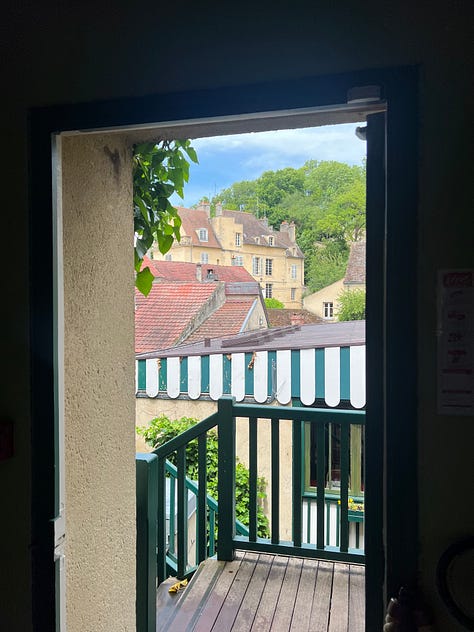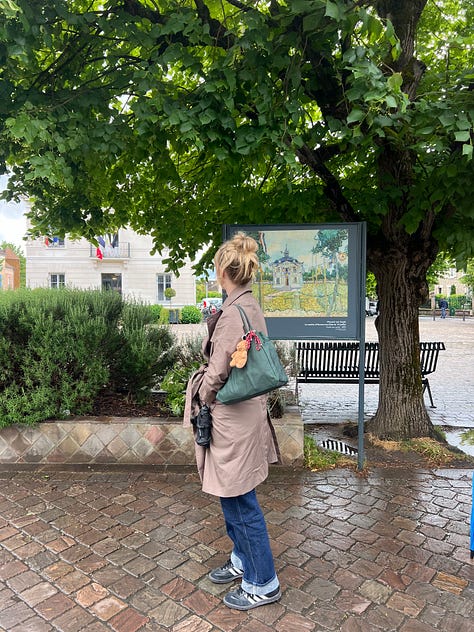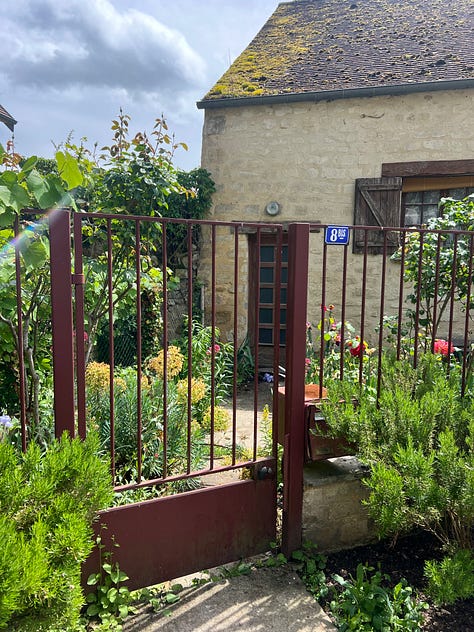The posts of Paris inspiration continue (albeit very belated)… If you read my last post, you know my not-so-recent travels included a day trip to Monet’s home and garden in Giverny (more to come on that)—and a stop in Auvers, the quaint, quiet village where Vincent Van Gogh spent the final weeks of his life, and it was a deeply moving experience.
I vividly remember learning about Starry Night in art class as an elementary school student. From the breathtaking mix of colors to the movement brought to life with every brush stroke to the rich emotion the piece cocoons you in, I was always smitten with this iconic oil-painted masterpiece, and seeing it in person amplified my appreciation for it more than I ever thought possible. Despite being moved by his style, artistic eye, and sheer talent, that young, bright-eyed girl couldn’t imagine how an afternoon in Auvers would shift the way I think about creating.



Van Gogh spent 70 days in Auvers before taking his life, and in that span of time, he created 74 paintings, completing more than one a day. We visited the attic room he called home, a cozy space perched on the top floor of The Ravoux Inn. As we learned more about this season of his life, a quote of his resonated with me.
“Painting is more like music and less like sculpture.”
When it comes to my writing, I often think of it through the lens of sculpture. I idealize every word, wanting the finished product to be sharp, precise, punchy, and perfect. But when the process of revising becomes a roadblock to publishing, it ultimately manifests as procrastination. And when procrastination becomes part of the process, the consequence is all the work you could be creating. What pieces could I be penning, what ideas might reveal themselves to me, and what might my body of work look like if I could detach from the ideal of perfection and let the writing stand all on its own?
Experts say that in the space of a decade, Van Gogh created 2,100 artworks, of which include 860 oil paintings. No matter how you spin it, it is indisputably impossible to cultivate a body of work of that stature if every piece is subject to the standard of perfection.
But the glossy, picture-perfect ideal of Instagram and the ease of deleting and editing and undoing that’s embedded into the inner workings of the digital age make it easy to lose sight of the process. Creating for the sake of creating—that is the process. That is the point of pursuing your craft. To only publish the works that feel perfect inherently dilutes the magic of experimentation, and the evolution that comes with it. Perfection is synonymous with specific parameters, and there are too many perspectives that persist in the world, too many opinions of what makes something “perfect” for all of our other ideas to be siloed and living in the shadows.
So, consider this post a public proclamation of a promise to myself to keep writing, to create for fun, and to give even my worst ideas a chance to exist beyond the “publish” button.




